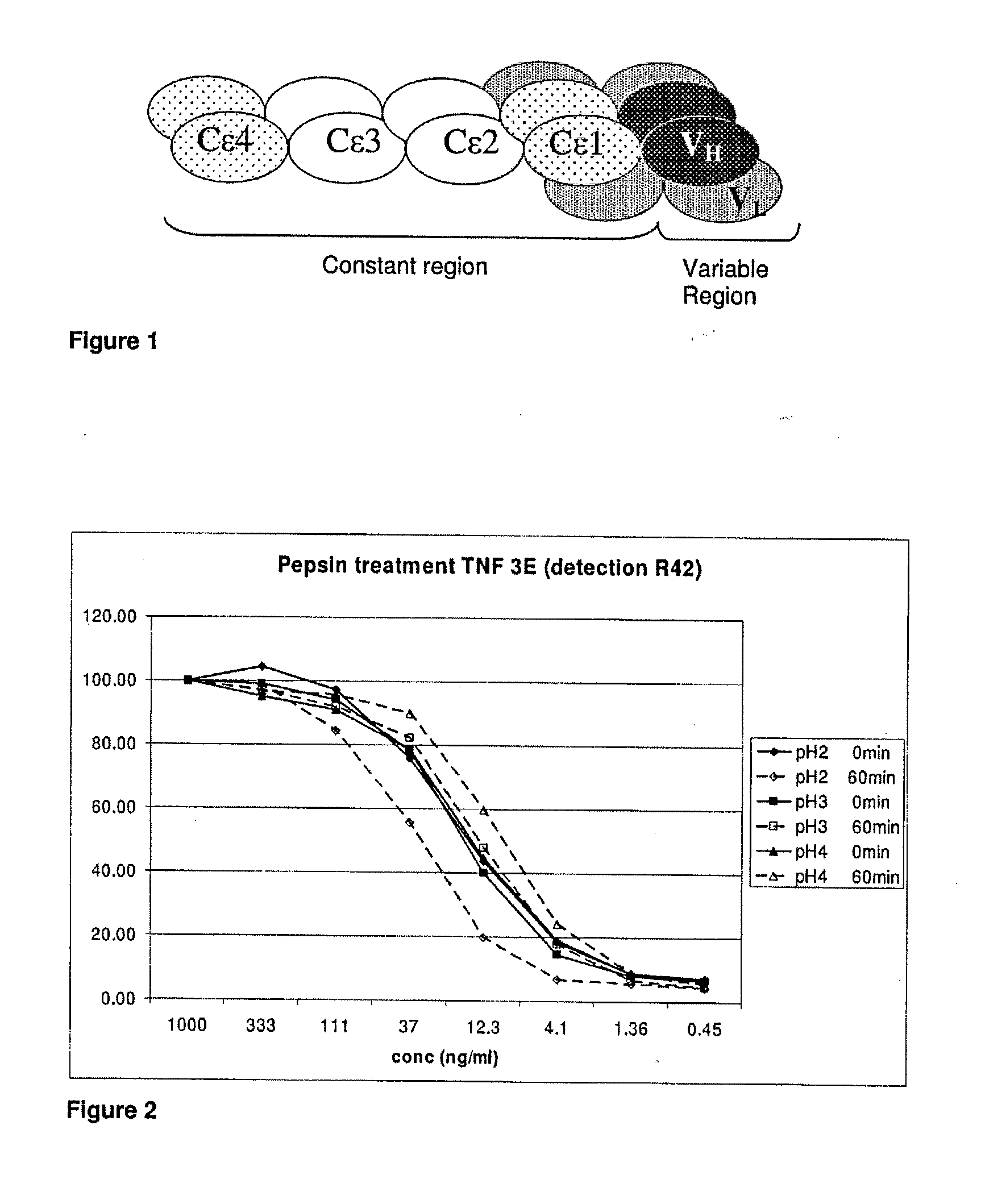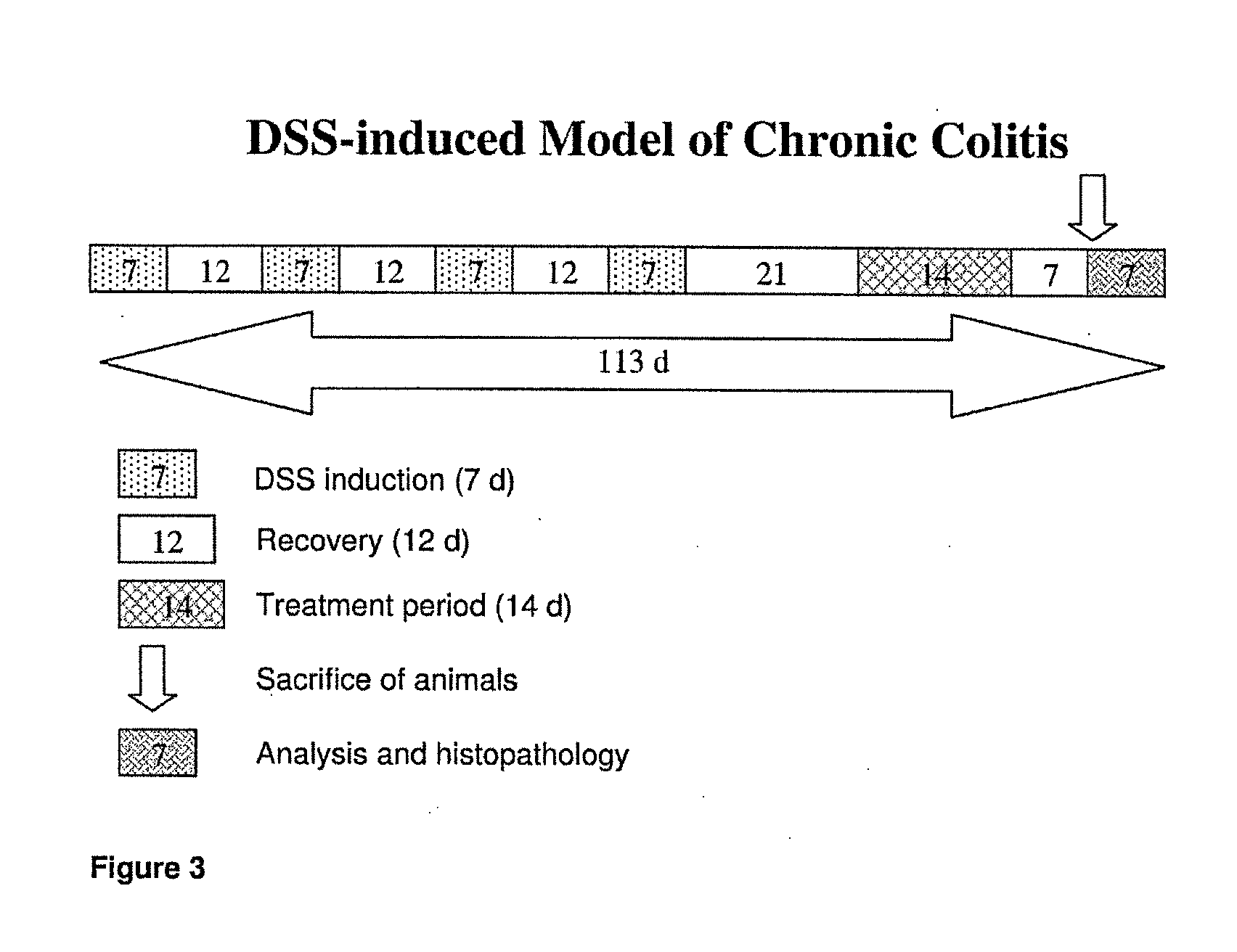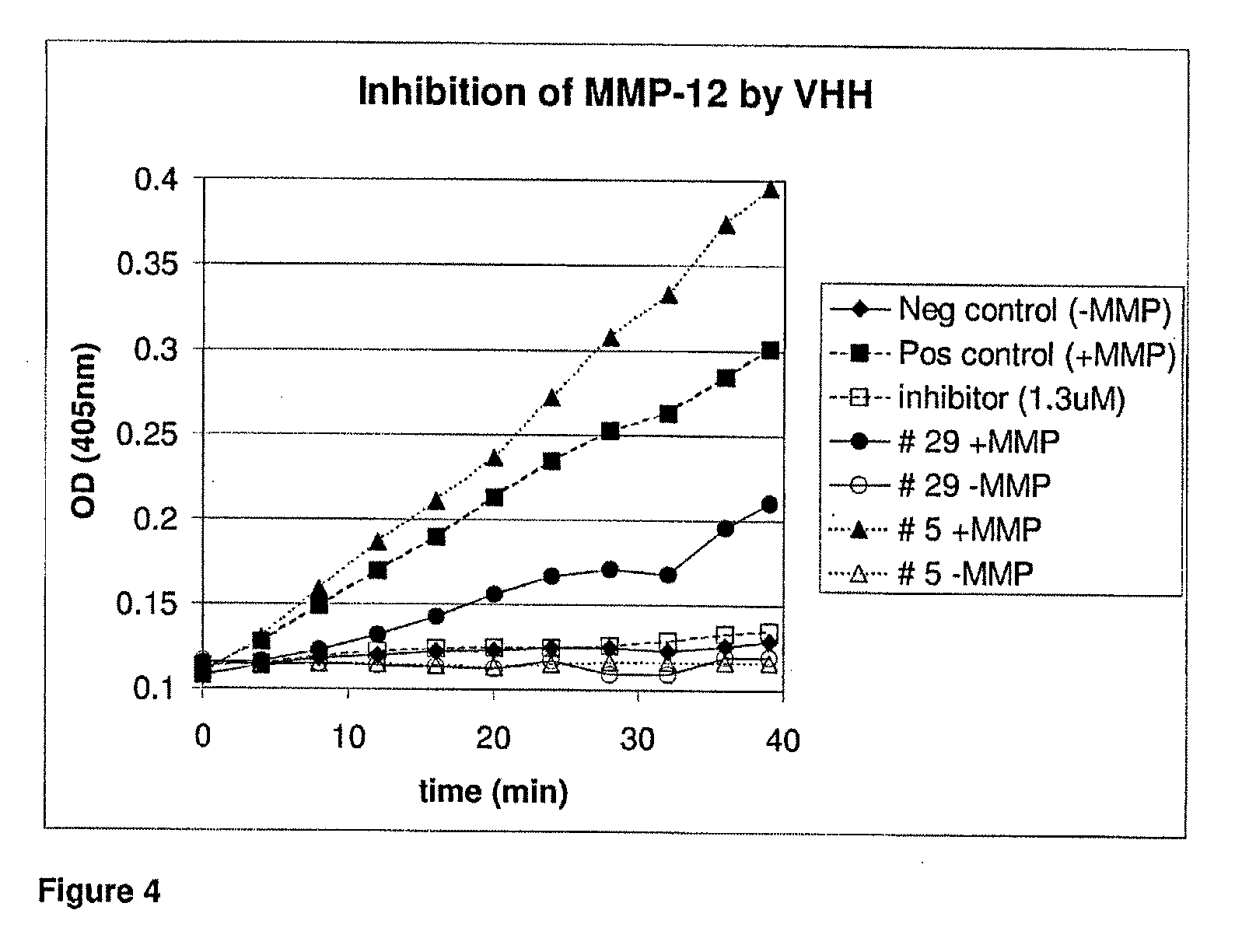Pulmonary administration of immunoglobulin single variable domains and constructs thereof
a technology of immunoglobulin and single-variable domain, which is applied in the direction of immunoglobulins, antibody medical ingredients, peptides, etc., can solve the problems of ineffective administration of conventional antibodies and their derived fragments or single-chain formats (e.g. scfv's), inability to administer conventional antibodies or their derived fragments or single-chain formats,
- Summary
- Abstract
- Description
- Claims
- Application Information
AI Technical Summary
Benefits of technology
Problems solved by technology
Method used
Image
Examples
example 1
VHH Directed Against IgE
[0454]Two llama's were immunized with human IgE, Scripps laboratories, Cat nr. 10224. The following immunization schemes were used according to Table 1.
[0455]Different sources for RNA extraction were used:[0456]150 ml immune blood, between 4 and 10 days after the last antigen injection[0457]lymph node biopsy 4 days after the last antigen injection
[0458]Peripheral blood lymphocytes (PBLs) were isolated by centrifugation on a density gradient (Ficoll-Paque Plus Amersham Biosciences). PBLs and lymph node were used to extract total RNA (Chomczynski and Sacchi 1987). cDNA was prepared on 200 μg total RNA with MMLV Reverse Transcriptase (Gibco BRL) using oligo d(T) oligonucleotides (de Haard et al., 1999). The cDNA was purified with a phenol / chloroform extraction, followed by an ethanol precipitation and subsequently used as template to amplify the VHH repertoire.
[0459]In a first PCR, the repertoire of both conventional (1.6 kb) and heavy-chain (1.3 kb) antibody ge...
example 2
Topical Applications of Anti-IgE VHH's
[0469]To obtain anti-allergic pharmaceutical compositions for ophthalmic topical applications, a solution of anti-IgE VHH was prepared as follows:[0470]eye drops containing a therapeutic dose of anti-IgE VHH dissolved in 100 ml of sterilized water containing 0.9 g sodium chloride, 0.02 g sodium citrate, 0.02 g methyl parahydroxybenzoate, 0.1 g chlorobutanol and acetic acid suitable to obtain a pH of 6.5.[0471]eye ointment containing a therapeutic dose of anti-IgE VHH was prepared according to the conventional method containing 1.0 g of liquid paraffin and a suitable amount of soft paraffin to obtain a total mixture of 100 g.
example 3
Anti-IgE Formulation
[0472]Anti-IgE VHH's that block binding of IgE to its high-affinity receptor are of potential therapeutic value in the treatment of allergy.
[0473]Highly purified VHH#2H11 was dialysed into formulation buffer, followed by addition of lyoprotectant at an isotonic concentration. Isotonic formulation was performed as follows: VHH#2H11 at 25 mg / ml was formulated in 5 mM histidine buffer at pH 6 with 500 moles of sugar per mole antibody. This formulation is reconstututed with BWFI (0.9% benzyl alcohol) at a volume which results in a 100 mg / ml of antibody in 20 mM histidine at pH 6 with an isotonic sugar concentration of 340 nM. The binding activity of the anti-IgE VHH in the isotonic formulations was measured in an IgE receptor inhibition assay. It was found that binding activity was essentially unchanged following storage at 4° C. for up to 3 months.
TNF-Alpha
PUM
| Property | Measurement | Unit |
|---|---|---|
| Time | aaaaa | aaaaa |
| Bioavailability | aaaaa | aaaaa |
Abstract
Description
Claims
Application Information
 Login to View More
Login to View More - R&D
- Intellectual Property
- Life Sciences
- Materials
- Tech Scout
- Unparalleled Data Quality
- Higher Quality Content
- 60% Fewer Hallucinations
Browse by: Latest US Patents, China's latest patents, Technical Efficacy Thesaurus, Application Domain, Technology Topic, Popular Technical Reports.
© 2025 PatSnap. All rights reserved.Legal|Privacy policy|Modern Slavery Act Transparency Statement|Sitemap|About US| Contact US: help@patsnap.com



